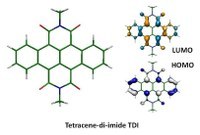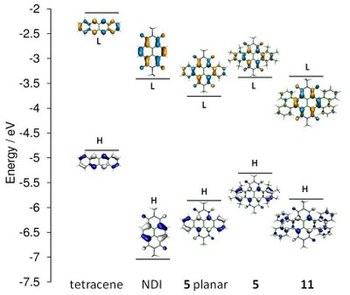
Among others, ambipolar organic semiconductors are emerging as interesting materials owing to their flexibility and their use in a variety of device architectures in different areas of organic electronics
Quinoidal oligothiophenes have been shown to be promising materials for their proven amphoteric properties. The longer members in the series show near-infrared (NIR) absorption features, driven by the reduction of their HOMO-LUMO energy gap, that make them of potential use in the field of organic photodetectors. NIR absorptions are desirable, for instance, to increase the efficiency of solar cells.
Another signature of the energy gap decrease occurring in chromophores with small HOMO-LUMO gaps is their increasing biradicaloid character.
Biradicaloids are suitable systems for singlet fission, a process that has recently received renewed interest because it enables the generation of a pair of charge separated triplet states and provides a strategy to generate two electron-hole pairs from a single photon, thereby increasing the efficiency of solar cells.

References